#winter war
Photo
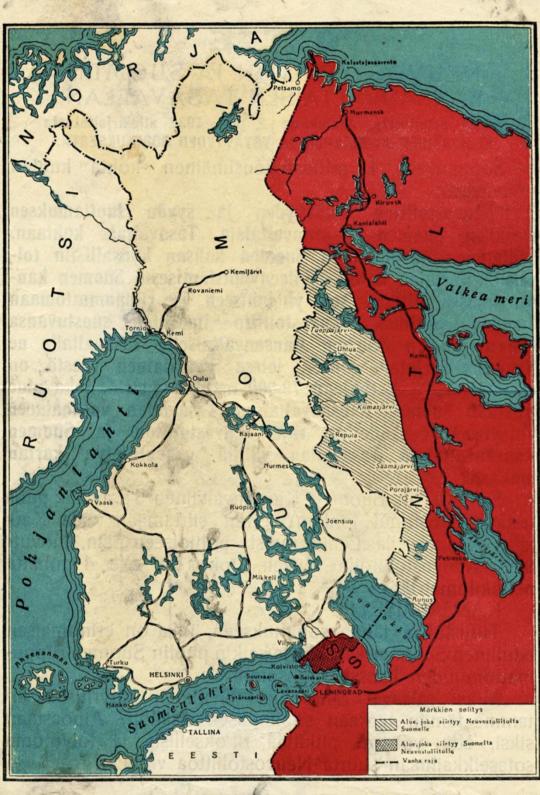
Soviet proposal for Finland in the Winter War
64 notes
·
View notes
Text
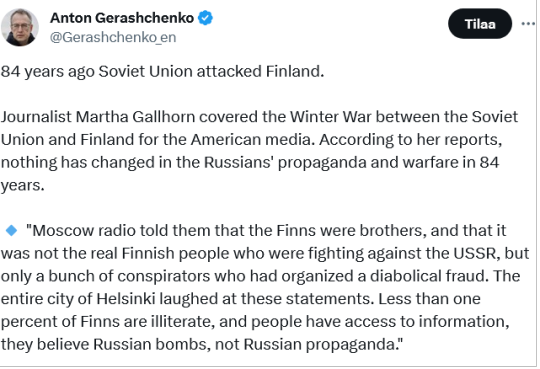


#suomi#finland#russia#russia is a terrorist state#winter war#sota#historia#*#alas tumblr absolutely refuses to allow me to add the video so you'll have to do with a screenshot
96 notes
·
View notes
Text
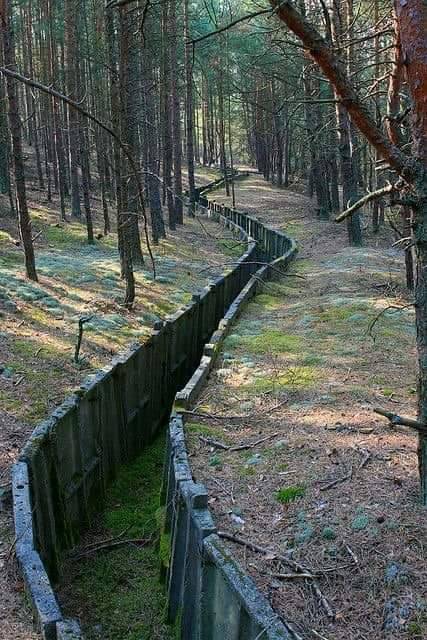
Trench from the Winter or Continuation Wars, Finland (or formerly Finland now Russia, depending on where the trench is).
102 notes
·
View notes
Text
Jushiro: treat spiders the way you want to be treated
Shunsui, Starrk, Lilynette, Love & Rose: *simultaneously* killed without hesitation
Jushiro: NO
#jushiro ukitake#shunsui kyoraku#coyote starrk#lilynette gingerbuck#love aikawa#rojuro otoribashi#rose otoribashi#bleach tybw#tybw#bleach memes#gotei 13#espada#winter war#bleach#vizards#visoreds#shunstarrk#loverose#roselove
54 notes
·
View notes
Text
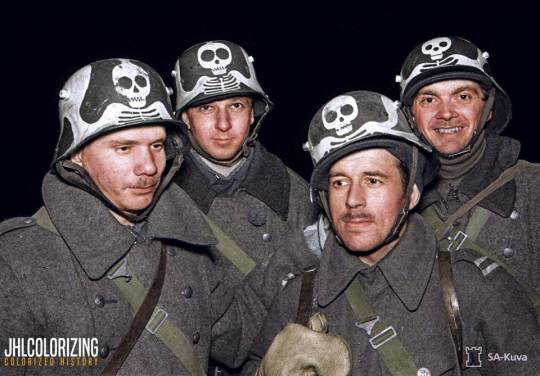
Finnish Jäger company of Light Detachment 5 (nicknamed "Company of Death") in Summa during the Winter War, 1939.
54 notes
·
View notes
Text
A funny thing in bloodborne is that Molotov cocktails exist, which means that both WW1 and WW2 happened in the bloodborne timeline. Molotov cocktails are named after Vyacheslav Molotov, a Soviet Minister. During the Winter war between the Soviets and the Finns, Molotov claimed that the bombs they were dropping over Finland were actually humanitarian food deliveries, for their starving neighbors. In response, the Finn's named Molotov cocktails after Molotov to mock him. They said it was "a drink to go with his food parcels". Molotov was also extremely important in the Molotov-Ribbentrop Pact between the Soviet Union and Nazi Germany just before WW2. Thus, these events had to have happened for Molotov Cocktails to be named so in Bloodborne. This is a joke obviously, don't take it seriously.
#ww1 history#ww2 history#molotov cocktail#vyacheslav molotov#winter war#finland#soviet russia#soviet union#bloodborne#soulsborne#cool history facts
76 notes
·
View notes
Text

Knock knock...
#pov you're the minister of justice and it's one am#my art#dnd#dungeons and dragons#winter war#sersay smythe#smythe and that damn minister
23 notes
·
View notes
Text
Winters are for soups, blankets, books, hot coffee, garam Chai, garam masala maggi, red-noses, flushed cheeks, oversized hoodies, fluffy sweaters, and combat boots.
We're going for war but we're going in ready.
#winters#soups#blankets#sleep#warmth#hot coffee#maggi#tea#hoodies#sweaters#combat boots#winter war#desiblr#desi#chaotic academia#humor#dark academia#desi academia#light academia#memes#academia#desi culture#winter aesthetic
241 notes
·
View notes
Text
"Säkkijärven polkka" - Финская Народная Песня
youtube
HISTORY TIME: From november 30, 1939-march 12,1940, Over claimed security concerns the USSR(Union of soviet socialist republics) demanded the secession of Eastern Findland in exchange for land elsewhere in what they claimed was to protect Leningrad just 20 miles east of the Fininsh border, when the Fins refused the imperialist nation of the USSR began the attempted conquest of Findland, though being victories against Findland claiming her eastern territory, this would come at a shear massive bloody cost and blow to the soviet empire leaving it wondering what was the point to begin with, but this folk polka song "Säkkijärven polkka" was believe or not kids, used to denote the soviets radio operated mines through a certian frequency the Fins cracked giving them a great upper hand what ya know, this has been a Cam history report
7 notes
·
View notes
Text
On This Day In History
December 14th, 1939: The Soviet Union is expelled from the League of Nations because it invaded Finland.
118 notes
·
View notes
Text

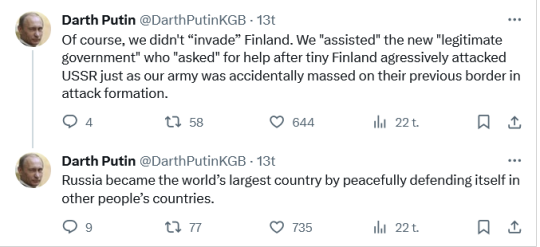
36 notes
·
View notes
Text

I love the aesthetic of this movie, especially HER🩵🩷
#Huntsman#snow#white#emily blunt#winter war#Freya#ice queen#sketchbook#artwork#Huntsman's winter's war#elastic heart
22 notes
·
View notes
Text


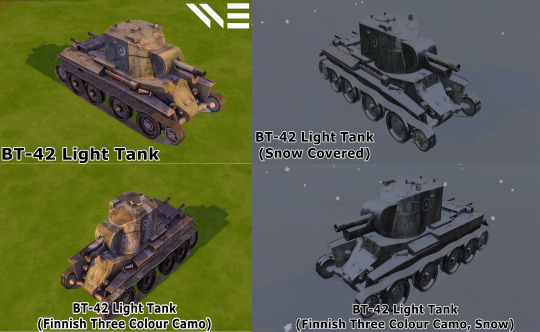








Finnish Army WW2 Light Tanks
One Of My Patron Request and Also Part Of Great Projects about Weapons and Heavy Machinery That Used During Winter War (1939-1940) & Continuation War (1941-1944) About The Finland Wars Against Soviet During during early and later Stages Of World War 2. For Your Informations Finnish Army During WW2 Heavy Machinery During Winter Wars Are Rely On Captured Soviets Tanks, Obsolete WW1 Products Or Licensed Products From Allied Countries
Disclaimer:Due Heavy Censorship Regarding Swastika Usage in Western Society, The Details of The Tanks Are Replaced With Roundel Instead of Finnish Hakaristi. However It Just A Minor Details that May Missed.
DOWNLOAD
Support Me In Patreon for Exclusive Business Agreement Or Support Me In Paypal For One-Time Support
BT-5 Light Tank
The BT tanks (Russian: Быстроходный танк/БТ, romanized: Bystrokhodnyy tank, lit. "fast moving tank" or "high-speed tank") were a series of Soviet light tanks produced in large numbers between 1932 and 1941. They were lightly armoured, but reasonably well-armed for their time, and had the best mobility of all contemporary tanks. The BT tanks were known by the nickname Betka from the acronym, or its diminutive Betushka. The successor of the BT tanks was the famous T-34 medium tank, introduced in 1940, which would replace all of the Soviet fast tanks, infantry tanks, and medium tanks in service.
This Particular Variant is BT-5: Armed larger cylindrical turret, 45 mm 20-K gun, coaxial DT machine gun. Earlier tanks used simpler fully cylindrical bolted turrets with rear bustle welded on.
BT-42 Light Tank
During the WWII, the Finnish Army utilized captured Soviet tanks as their significant armament. Among these was the BT-42 assault gun which the Finnish Army created by pairing the hull from a captured Russian BT-7 Model 1937 light tank with a British 114mm howitzer and a redesigned BT-7's large boxy turret. 18 units were produced from 1943 to 1944 and they were deployed to the Svir River region to attack the Russian bastion. In June 1944 during the Battle of Vyborg, BT-42s saw fierce combat against advancing Russian forces.
Renault FT-17 Light Tank
The Renault FT (frequently referred to in post-World War I literature as the FT-17, FT17, or similar) was a French light tank that was among the most revolutionary and influential tank designs in history. The FT was the first production tank to have its armament within a fully rotating turret. The Renault FT's configuration (crew compartment at the front, engine compartment at the back, and main armament in a revolving turret) became and remains the standard tank layout. Consequently, some armoured warfare historians have called the Renault FT the world's first modern tank. Over 3,000 Renault FT tanks were manufactured by French industry, most of them in 1918. After World War I, FT tanks were exported in large numbers. Copies and derivative designs were manufactured in the United States (M1917 light tank), in Italy (Fiat 3000) and in the Soviet Union (T-18 tank). The Renault FT saw combat during the interwar conflicts around the world, but was considered obsolete at the outbreak of World War II.
This Model Armed with Puteaux SA 1918 37 mm gun While The Other , Equipped With 8mm Hotchkiss Mle 1914 Machine gun for Anti-Personnel Purpose (Not Showed in Review)
KhT-130
KhT-130 is Flamethrower variant of model 1933 which is Variant Of Soviet T-26 Tank, The Most Successful and Most Modular Pre-WW2 Light Tanks using a larger 45 mm gun turret (a gun was replaced with a flamethrower for Anti-Personnel Purpose).
Landsverk L-62 Anti II
Landsverk L-62, also known as Landsverk Anti II or a combination of both, Landsverk L-62 Anti II, was a Swedish self-propelled anti-aircraft gun construction that was specifically designed for Finland by Landsverk between 1941 and 1942.
The vehicle was an improved Landsverk L-62 Anti I where the turret and chassis had been improved for better protection. The chassis was based on the Landsverk L-60 tank but was lengthened with one extra roadwheel per side. The turret was circular and open for a better view against planes. The gun was a 40 mm Bofors L/60 anti-air gun which was already in service with the Finnish military as the 40 ItK/38.
Vickers Mark E
The Vickers 6-ton tank or Vickers Mark E, also known as the "Six-tonner" was a British light tank designed as a private project at Vickers. It was not adopted by the British Army, but was picked up by many foreign armed forces. It was licensed by the Soviet Union as the T-26. It was also the direct predecessor of the Polish 7TP tank.
Hotchkiss H39 Light Tank (German:PzKpfw 38H-735)
The Hotchkiss H39 (a variant of the Hotchkiss H35) was captured and used by Germany as the PzKpfw 38H-735.
The Hotchkiss H35, or Char léger modèle 1935 H, was a French light tank developed prior to World War II. Despite having been designed from 1933 as a rather slow, but well-armored, light infantry support tank, the type was initially rejected by the French Infantry because it proved difficult to steer while driving cross-country, and was instead adopted in 1936 by the French Cavalry. In 1938, an improved version was produced with a stronger engine, the Char léger modèle 1935 H modifié 39, that from 1940 was also fitted with a longer, more powerful 37 mm gun. It was intended to make this improved variant the standard light tank, and was to be produced in a number of at least four thousand in order to equip new armored divisions of both the Cavalry and the Infantry. However, due to the defeat of France in June 1940, total production of both subtypes remained limited to about 1200 vehicles. For the remainder of the war, Germany and its allies would use captured Hotchkiss tanks in several modifications.
Hotchkiss H39 Light Tank (German:Panzerkampfwagen 38H 735(f))
Variants of A Captured Hotchkiss H39 Tank by German, Outfitted with Nebelwerfer 42, A 30mm German Rockets.
Soviet T-50
The T-50 was a light infantry tank built by the Soviet Union at the beginning of World War II. The design for this vehicle had some advanced features, but was complicated and expensive, and only a short production run of 69 tanks was completed.
Soviet T-26
The T-26 tank was a Soviet light infantry tank used during many conflicts of the 1930s as well as during World War II. It was a development of the British Vickers 6-Ton tank and is widely considered one of the most successful tank designs of the 1930s. It was produced in greater numbers than any other tank of the period, with more than 11,000 produced. During the 1930s, the USSR developed approximately 53 variants of the T-26, including other combat vehicles based on its chassis. Twenty-three of these were mass-produced. The T-26 was used extensively in the armies of Spain, China and Turkey. In addition, captured T-26 light tanks were used by the Finnish, German, Romanian and Hungarian armies. Though nearly obsolete by the beginning of World War II, the T-26 was the most important tank of the Spanish Civil War and played a significant role during the Battle of Lake Khasan in 1938 as well as in the Winter War in 1939-40. The T-26 was the most numerous tank in the Red Army's armored force during the German invasion of the Soviet Union in June 1941. The Soviet T-26 light tanks last saw use in August 1945, in Manchuria. The T-26 was reliable and simple to maintain, and its design was continually modernized between 1931 and 1941, with a total of 11,218 vehicles built. However, no new models of the T-26 were developed after 1940.
Soviet T-26E
Variant Of Soviet T-26 tank with additional armour plating (appliqué armour). Some modern sources mention this tank as T-26E (E stands for ekranirovanny or "screened"). The Factory No. 174 developed the design of 30–40 mm appliqué armour for all types of single-turreted T-26s during the Winter War. On 30 December 1939, factory tests proved that the T-26 with appliqué armour successfully resisted fire from a 45 mm anti-tank gun at a range from 400 to 500 m. Side and front armoured plates were mounted with the use of blunt bolts and electric welding. Toward the middle of February 1940, the RKKA received 27 screened T-26 mod. 1939 tanks and 27 KhT-133 flame-throwing tanks; an additional 15 T-26 mod. 1939 tanks were armoured by workshops of the 8th Army in Suoyarvi in the beginning of March 1940. All in all, 69 T-26s with appliqué armour were used during the Winter War and 20 more were delivered to tank units after the end of the war. Combat use proved that Finnish light anti-tank guns could not penetrate the armour of these tanks.
#the sims 4#the sims#the sims 4 custom content#ts4 cc#ts4military#the sims 4 military#ts4#the sim#the sims 4 cc#ts4cc#finland#soviet union#winter war#the sims 4 decades challenge#ts4 decades challenge#the sims 4 decor#russian tanks#Tanks#the sims 4 build#sims 4 decades#decades challenge#1930s#1940s#Sims 4 war#world war 2#the sims 4 ww2#ww2#light tank
36 notes
·
View notes
Text

A Finnish soldier stands next to a captured Soviet T-28 from the 20th Heavy Tank Brigade, December 1939.
97 notes
·
View notes
Text




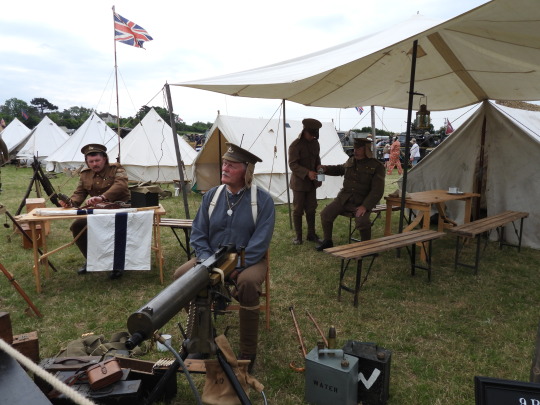
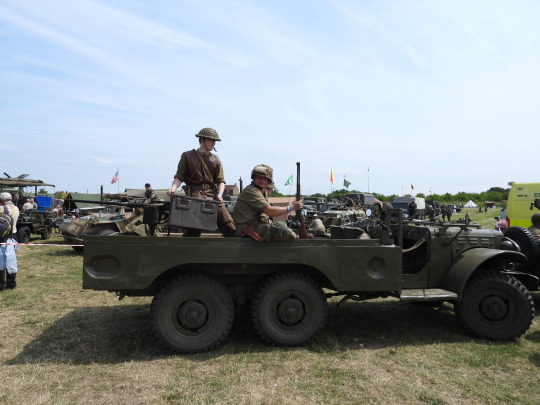

Wartime on the Vale, 2023
#second world war#first world war#british army#royal air force#winter war#Finnish army#us army#cw gun
48 notes
·
View notes
Text
[jaunty flute solo] SHORT
#I made this a while ago but I still like it#dnd#dungeons and dragons#winter war#sersay smythe#rhothomire kellnerin#zellis nimruth#valeria cesha#my art#animatic
19 notes
·
View notes